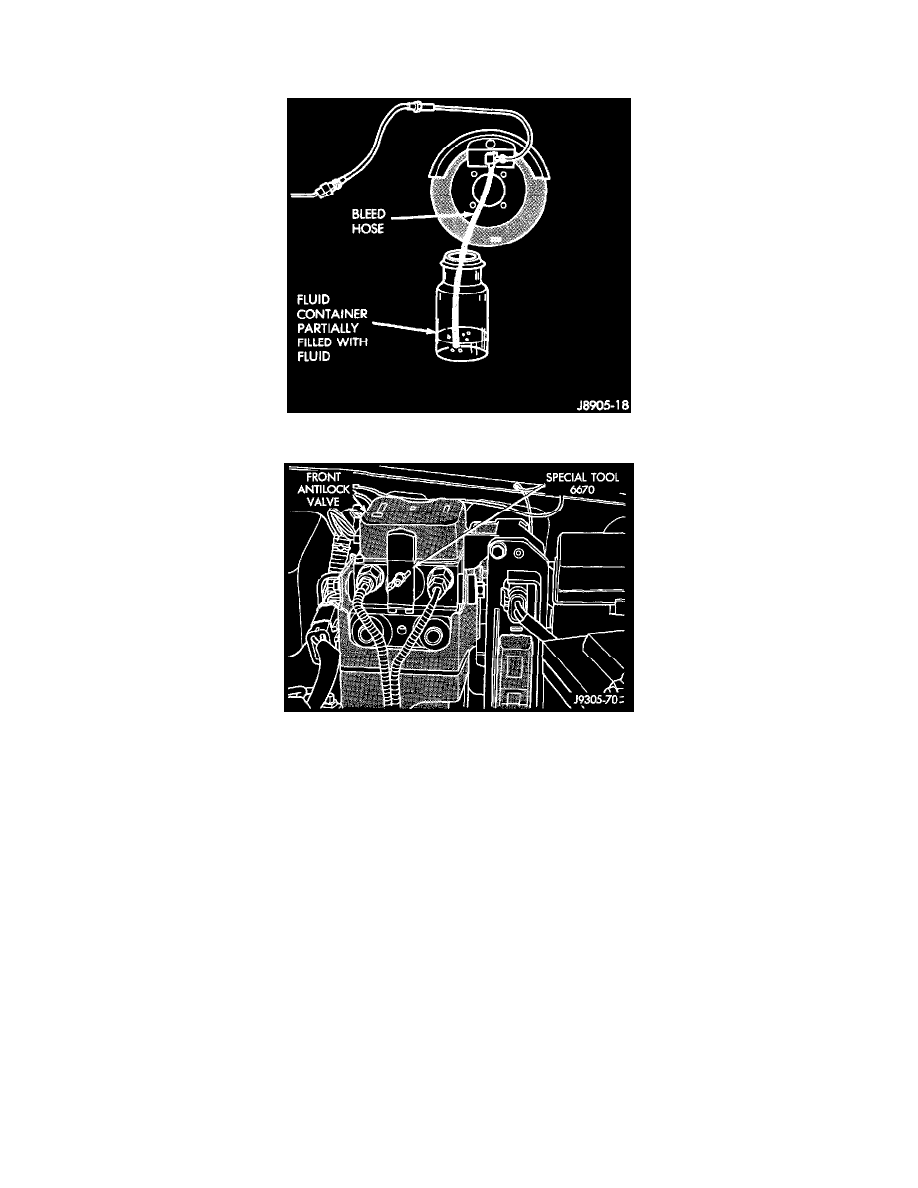3500 4x4 Pickup V10-488 8.0L Magnum (1994)

Brake Master Cylinder: Service and Repair
Master Cylinder Bleeding
Fig 2 Typical Fluid Container And Bleed Hose
Fig 3 Front Antilock Valve Bleed Tool Installation
NOTES:
-
Use Mopar DOT 3 brake fluid, or an equivalent meeting SAE J1703-F and DOT 3 standards, to fill and bleed the system.
-
The disc brake hydraulic system can be bled manually or with pressure bleeding equipment.
-
On vehicles with disc brakes the brake pedal will require more pumping and frequent checking of fluid level in master cylinder during bleeding
operation.
CAUTIONS: Never use brake fluid that has been drained from hydraulic system when bleeding the brakes. Be sure the disc brake pistons are returned
to their normal positions and that the pad assemblies are properly seated. Before driving the vehicle, check brake operation to be sure that a firm pedal
has been obtained.
Bleeding Procedure
1. If master cylinder has been overhauled or a new cylinder will be installed, bleed cylinder on bench before installation. This shortens time needed
to bleed system and ensures proper cylinder operation.
2. Wipe master cylinder reservoir and filler caps clean with shop towels. Use Mopar brake cleaner if exterior of reservoir and filler caps are
extremely dirty.
3. Remove reservoir filler caps and fill reservoir with Mopar, or equivalent DOT 3 brake fluid.
4. Open all caliper and wheel cylinder bleed screws.
5. Close bleed screws when fluid starts flowing1 from each bleed screw.
6. Top off master cylinder reservoir again.
7. Bleed brakes in following sequence:
-
master cylinder
-
rear antilock valve
